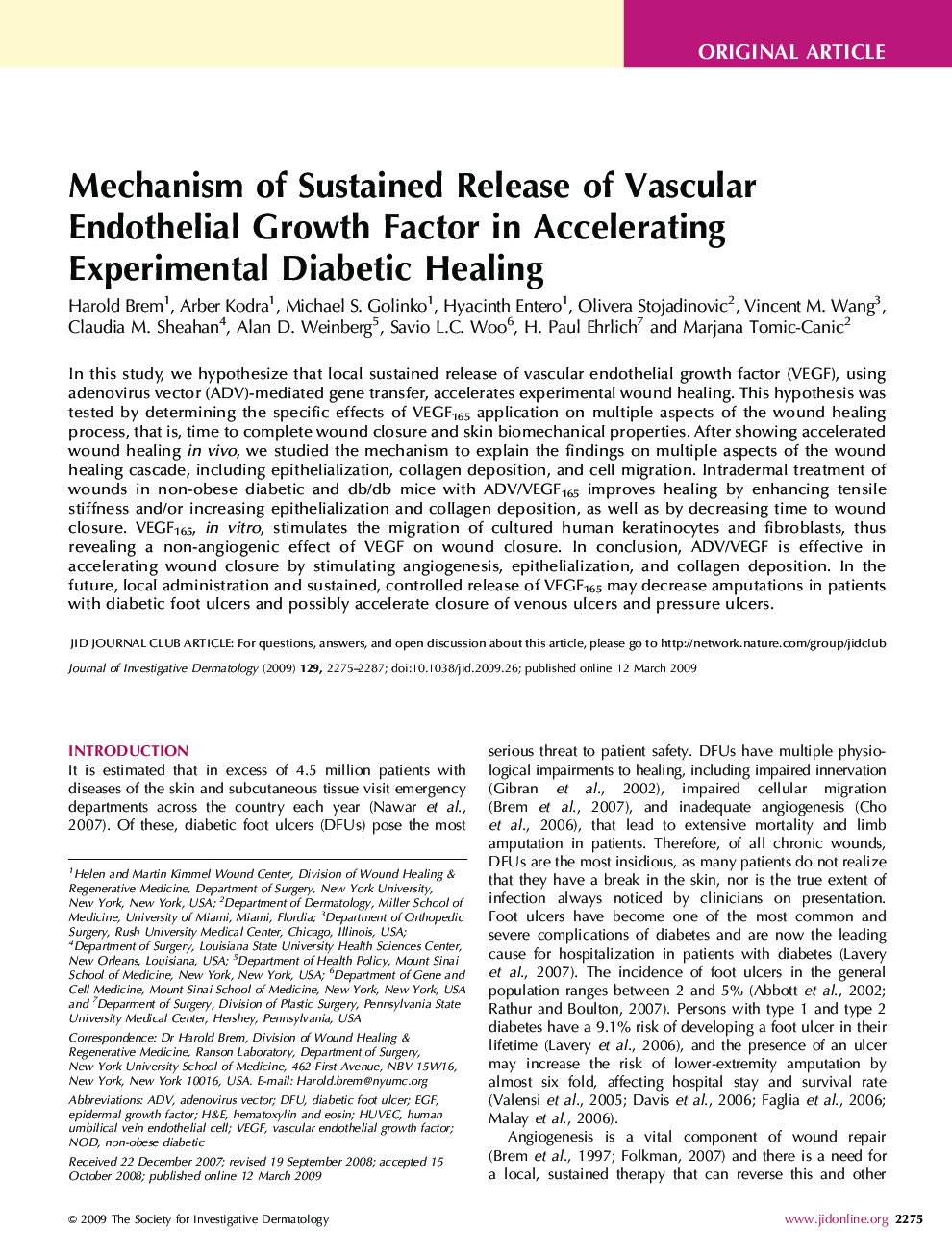| کد مقاله | کد نشریه | سال انتشار | مقاله انگلیسی | نسخه تمام متن |
|---|---|---|---|---|
| 3217608 | 1203607 | 2009 | 13 صفحه PDF | دانلود رایگان |

In this study, we hypothesize that local sustained release of vascular endothelial growth factor (VEGF), using adenovirus vector (ADV)-mediated gene transfer, accelerates experimental wound healing. This hypothesis was tested by determining the specific effects of VEGF165 application on multiple aspects of the wound healing process, that is, time to complete wound closure and skin biomechanical properties. After showing accelerated wound healing in vivo, we studied the mechanism to explain the findings on multiple aspects of the wound healing cascade, including epithelialization, collagen deposition, and cell migration. Intradermal treatment of wounds in non-obese diabetic and db/db mice with ADV/VEGF165 improves healing by enhancing tensile stiffness and/or increasing epithelialization and collagen deposition, as well as by decreasing time to wound closure. VEGF165, in vitro, stimulates the migration of cultured human keratinocytes and fibroblasts, thus revealing a non-angiogenic effect of VEGF on wound closure. In conclusion, ADV/VEGF is effective in accelerating wound closure by stimulating angiogenesis, epithelialization, and collagen deposition. In the future, local administration and sustained, controlled release of VEGF165 may decrease amputations in patients with diabetic foot ulcers and possibly accelerate closure of venous ulcers and pressure ulcers.JID JOURNAL CLUB ARTICLE: For questions, answers, and open discussion about this article, please go to http://network.nature.com/group/jidclub
Journal: Journal of Investigative Dermatology - Volume 129, Issue 9, September 2009, Pages 2275–2287